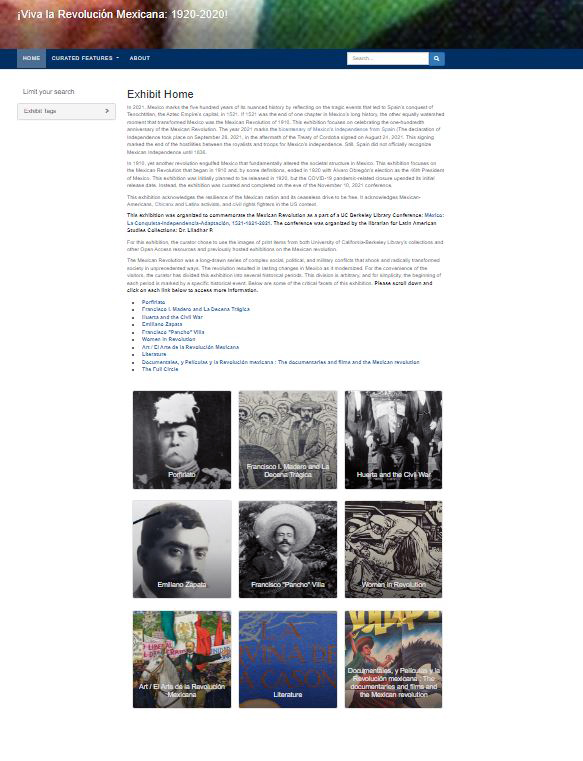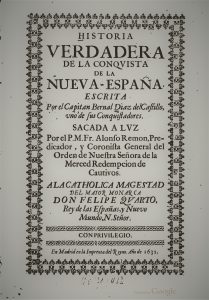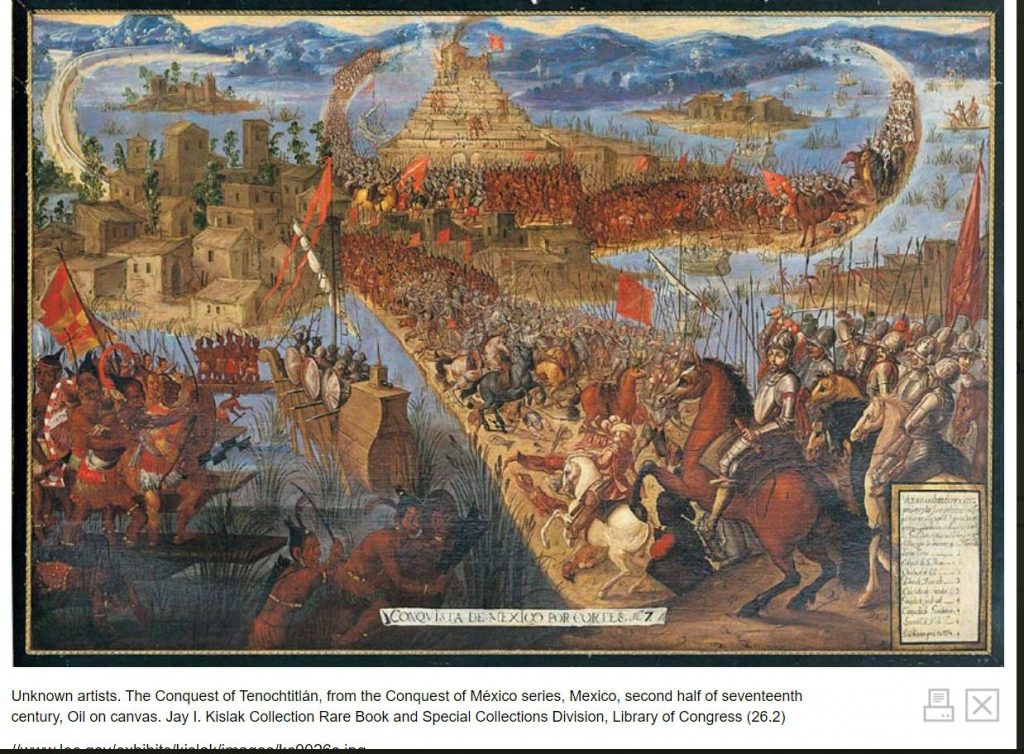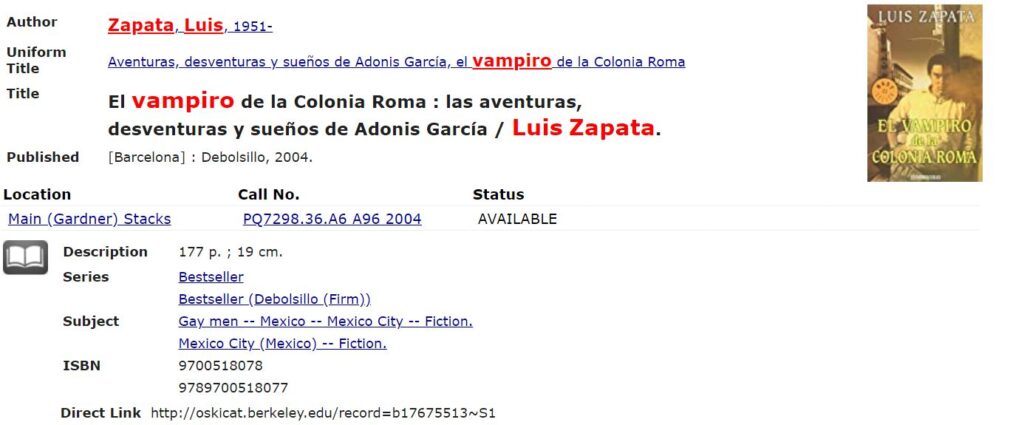Tag: Mexico
Grito de Dolores, Aniversario de la Independencia and Fiestas Patrias
Each year, Mexico marks an anniversary of its independence. One of the revered heroes of Mexico has been Fr. Miguel Hidalgo y Costilla, whose Grito de Dolores has been frequently used as a rallying tool against the perceptions of injustice. UC Berkeley’s Library is rich in print and analog materials on Mexico’s history. Fiestas Patrias is one essential component of the holiday celebration, both here in the United States and Mexico.
Recently, I was surprised to see a box waiting to for me in the office that was mailed to me by the FCE in Mexico as a gift to the library. Below are some scanned images of the books that were in that box. Not all the books below deal with the Independence of Mexico, however these represent cultural and informational objects that inform their readers of Mexico’s rich yet complicated history and literature.
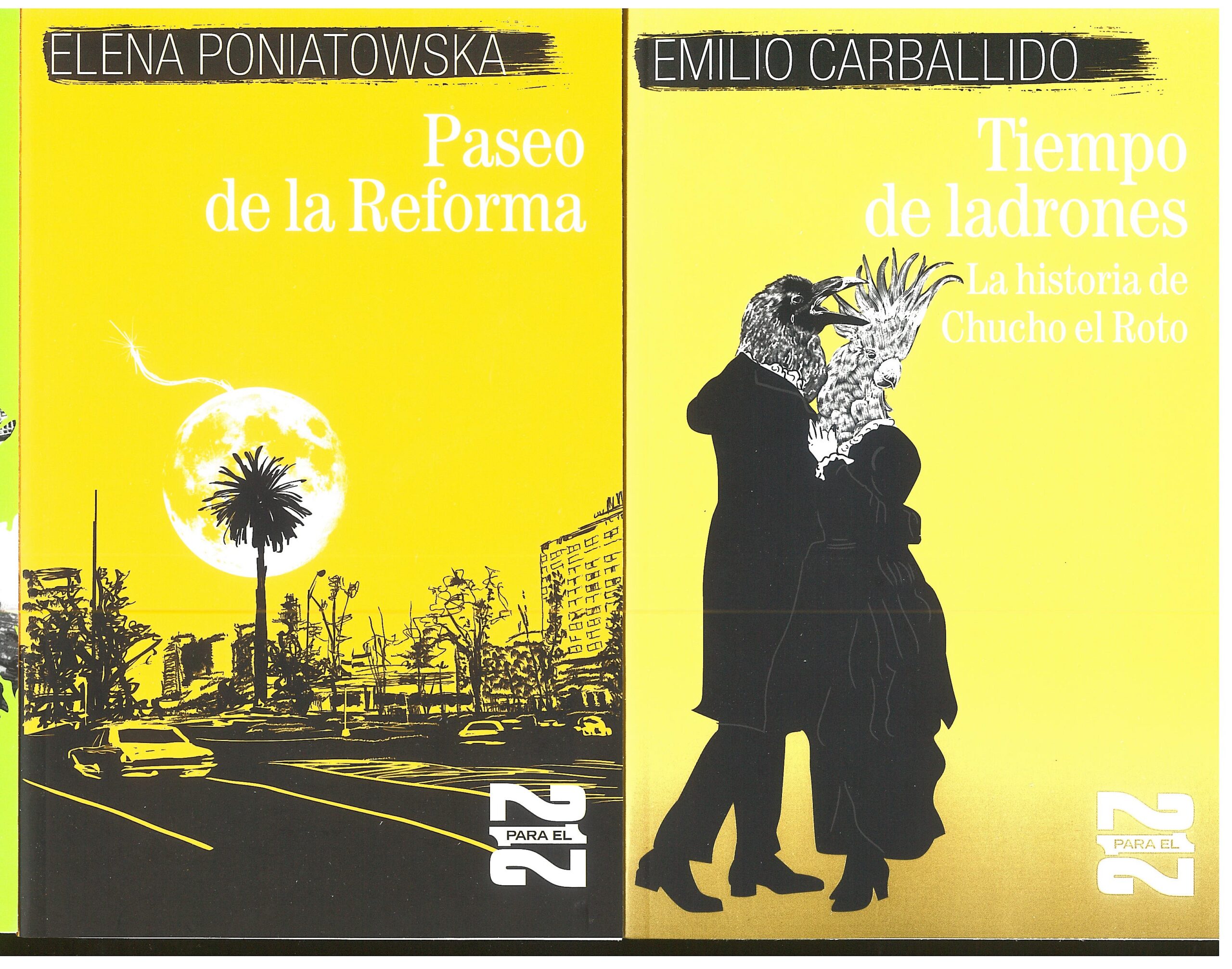
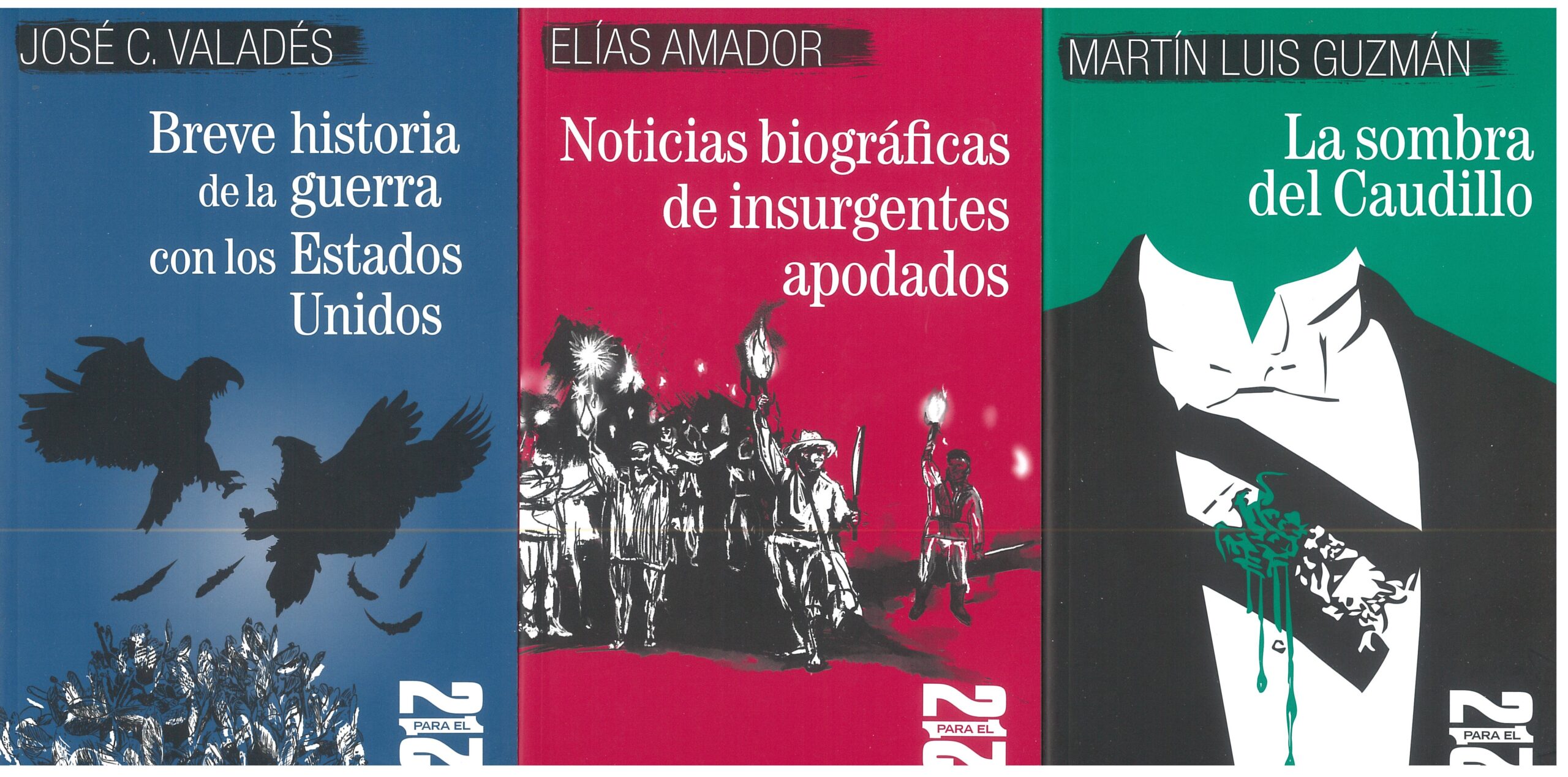
I leave you with a recent video of one of Mexico’s prolific writers and historian, Paco Ignacio Taibo II. We do have many books that deal with the subject of El Cura Hidalgo.
Besides this video, the resilience of el pueblo to survive through odds is something that inspires me to serve our students and faculty from diverse backgrounds as a librarian at a public academic library of University of California.
New book by Estelle Tarica
Holocaust Consciousness and Cold War Violence in Latin America proposes the existence of a recognizably distinct Holocaust consciousness in Latin America since the 1970s. Community leaders, intellectuals, writers, and political activists facing state repression have seen themselves reflected in Holocaust histories and have used Holocaust terms to describe human rights atrocities in their own countries. In so doing, they have developed a unique, controversial approach to the memory of the Holocaust that is little known outside the region. Estelle Tarica deepens our understanding of Holocaust awareness in a global context by examining diverse Jewish and non-Jewish voices, focusing on Argentina, Mexico, and Guatemala. What happens, she asks, when we find the Holocaust invoked in unexpected places and in relation to other events, such as the Argentine “Dirty War” or the Mayan genocide in Guatemala? The book draws on meticulous research in two areas that have rarely been brought into contact—Holocaust Studies and Latin American Studies—and aims to illuminate the topic for readers who may be new to the fields.
[from publisher’s site]
Estelle Tarica is Professor of Latin American Literature and Culture and former Chair of the Latin American Studies Program at UC Berkeley. She is incoming Chair of the Department of Spanish & Portuguese. Her previous book The Inner Life of Mestizo Nationalism concers the discourse of indigenismo and mestizaje in Mexico, Peru and Bolivia focusing on the work of José María Arguedas, Rosario Castellanos and Jesús Lara. Her articles have appeared in edited volumes and in the journals Chasqui, Revista de Crítica Literaria Latinoamericana, Latin American Literary Review, Journal of Latin American Studies, Política Común and Yale French Studies, among others.
She discussed her latest book with Alejandra Decker (Hispanic Languages and Literatures, UCB) and Robert Kaufman (Comparative Literature, UCB) on April 7 through the Center for Latin American Studies.
Holocaust Consciousness and Cold War Violence in Latin America.
Albany: State University of New York Press, 2022.
A new online exhibition at UC Berkeley Library: ¡Viva la Revolución Mexicana: 1920-2020!
We are delighted to announce a new virtual exhibition, “¡Viva la Revolución Mexicana: 1920-2020!” that was initially going to be a physical exhibition to accompany an in-person conference, “México: La Conquista-Independencia-Adaptación, 1521-1821-2021,” that the librarian for the Caribbean and Latin American Collections, Dr. Liladhar Pendse had planned. When you first land on the home for this exhibition, please scroll down to see its different features.
However, the COVID-19 pandemic upended any real opportunity to meet in person, and everything was a bit delayed. Thus, we had to resort to a virtual exhibition and conference.
Both endeavors could not have been possible without assistance, encouragement, and support from many of our colleagues.
Tomorrow: November 10-México: La Conquista-Independencia-Adaptación:1521-1821-2021
Conference: México: La Conquista-Independencia-Adaptación:1521-1821-2021 that is scheduled to take place on November 10th virtually. We are grateful to the sponsors of this virtual conference: UC Berkeley Library, Center for Latin American Studies, and the Department of Spanish and Portuguese of UC Berkeley.
Two hundred years ago today, Mexico signed the Declaration of Independence from the Spanish Empire (Acta de Independencia del Imperio Mexicano). The conference is dedicated to noting some critical landmark dates in the history of Mexico and Latin America. I am also attaching an image of a conference poster that our library’s communications team members have created. We also note that the image used for this poster is from Codex Yoalli Ehecatl (also known formerly as Codex Borgia).
We are grateful to all faculty members across our continent who will be speaking at this conference. All are welcome to attend with prior registration the whole forum or its parts as you see fit in your busy workday.
Please register here: https://sites.google.com/berkeley.edu/mexico-1521-1821-1921/home/registration-inscripci%C3%B3n?authuser=0
The Organizing Committee: Dr. Liladhar R. Pendse and Professor Ivonne Del Valle, UC Berkeley
Conference Sponsors: UC Berkeley Library, Center for Latin American Studies, Department of Spanish and Portuguese, UC Berkeley

Mexico and the conquest of Tenochtitlán (May 1521-2021)
The month of May this year marks the five-hundredth anniversary of the fall of Tenochtitlán (1521-2021). The tragedies that unfolded in the continent after the conquest are well documented. However, as far as the accounts of the fall of the Tenochtitlán are concerned, there are several different opinions and disagreements. What about the letters of Hernán Cortés? Here is the second letter from the WDL
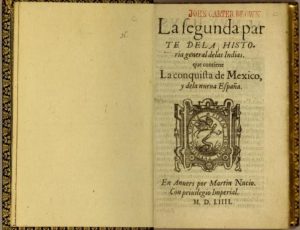 Also on the archive.org, we see a digitized copy of JCB’s 1552 Francisco López de Gómara’s “La historia general de las Indias, y todo lo acaescido enellas dende que se ganaron hasta agora. ; y La conquista de Mexico, y dela Nueua España.”
Also on the archive.org, we see a digitized copy of JCB’s 1552 Francisco López de Gómara’s “La historia general de las Indias, y todo lo acaescido enellas dende que se ganaron hasta agora. ; y La conquista de Mexico, y dela Nueua España.”
What are some of the primary sources that are now open access and can be used to inform us about the events that unfolded five hundred years ago? One such source is Bernal Díaz del Castillo’s is work, “Historia verdadera de la conquista de la Nueva España.” On the right, one sees a title page of the 1632 imprint of the same that is available in Google Books.
While some often use paintings from the late 17th century to depict and describe the fall of the capital of the Aztecs, these are often functions of the artistic license, and in some cases, we do not know who could have painted them.
The painting, such as the one below, is one example from the Library of Congress’ collection. Can images narrate the nuanced past accurately? These images are from the LOC’s exhibition and also in Wikimedia commons.
But where are the voices of those who were conquered but not vanquished? Can we rely on Codex Florentino as one perhaps contested source? The WDL (from the collection of Biblioteca Medicea-Laurenziana) has made it available for the readers to judge the process that began with the conquest of Tenochtitlán. The LOC’s description reads, “Historia General de las Cosas de Nueva España” (General History of the Things of New Spain), as the Florentine Codex is formally known, is an encyclopedic work about the people and culture of central Mexico compiled over a period of 30 years by Fray Bernardino de Sahagún (1499–1590), a Franciscan missionary who arrived in Mexico in 1529, eight years after completion of the Spanish conquest by Hernan Cortés. The text is in Spanish and Nahuatl, the language of the Aztecs. Its 12 books, richly illustrated by indigenous artists, cover the Aztec religion and calendar, economic and social life, Aztec history and mythology, the use of plants and animals and the Spanish conquest as seen through the eyes of the native Mexicans.”
I leave you with unfinished thoughts. Can a manuscript tell the story? See for yourself by watching Getty Researcher Institute’s five-part series. And with Taibo’s, “¿Historia para qué?”I love Paco Ignacio Taibo II’s argument about who we are? And his questioning of sanitization history where Cortes and Cuauhtemōc are dancing La Sandunga.
Julián Herbert – La Casa del Dolor Ajeno
On May 16th, the Guardian newspaper reported the tragic events in Torreón, Mexico, during the Mexican Revolution under the headline. The headline read: Mexico faces up to the uneasy anniversary of Chinese massacre.
As the librarian, I look mostly for Latin American Studies-related materials without any judgment about the contents and collect for our library a representative and sustainable collection of all aspects of Latin America that are diverse and neverending. After reading the headline, it reminded me of my research on Chinese in Mexicali during my graduate school. Today, I leave you with some library materials that relate to Chinese in Mexico and Latin America.
The house of the pain of others: a chronicle of a small genocide / Julián Herbert; translated from the Spanish by Christina MacSweeney (Minneapolis, Minnesota: Graywolf Press, [2019]). The publisher’s description in WorldCat states, “Early in the twentieth century, amid the myths of progress and modernity that underpinned Mexico’s ruling party, some three hundred Chinese immigrants–close to half of the Cantonese residents of the newly founded city of Torreón–were massacred over the course of three days. It is considered the largest slaughter of Chinese people in the history of the Americas, but more than a century later, the facts continue to be elusive, mistaken, and repressed. ‘And what do you know about the Chinese people who were killed here?’ Julián Herbert asks anyone who will listen. An exorcism of persistent and discomfiting ghosts, ‘The House of the Pain of Others’ attempts a reckoning with the 1911 massacre. Looping, digressive, and cinematic, Herbert blends reportage, personal reflection, essay, and academic research to portray the historical context as well as the lives of the perpetrators and victims of the ‘small genocide.’ This brilliant historical excavation echoes profoundly in an age redolent with violence and xenophobia”–Page 4 of cover.”
Here is the presentation by the Author for your information.
https://youtu.be/3efedXvJYnw
On one-hundredth anniversary of the Chinese Massacre of Mexico, Mexican President Andrés Manuel López Obrador(AMLO) held a ceremony whose title was, “Petición de perdón por agravios a la comunidad china en México, desde Torreón, Coahuila. Lunes 17 de mayo 2021.” Below is an excerpt from his speech.
Open Access Journal: ESTUDIOS DE CULTURA NÁHUATL
As some librarians scramble to collect materials in endangered languages and continue competing professionally for acquiring difficult to find low print materials in the indigenous studies and regional languages, they sometimes end up overlooking readily available open access sources. These sources can enrich students’ and faculty’s academic experiences. This is the first post in a series of occasional posts highlighting some of the well-known academic journals that deal with indigenous studies. One such Mexican journal is Estudios De Cultura Náhuatl.
The journal site’s self-description is as follows, “Estudios de Cultura Náhuatl es una revista científica del Instituto de Investigaciones Históricas de la Universidad Nacional Autónoma de México. Difunde trabajos de investigación sobre la lengua y la cultura de los pueblos de habla náhuatl de ayer y hoy. Con más de sesenta años desde su primera aparición, Estudios de Cultura Náhuatl es un referente ineludible en su campo de estudio.” Below is the landing page of the journal. If one clicks on the photo below, you can see on the right side of the website, indexed issues. At the time of writing this post, there was a full-text access and index to issues of the journal beginning 1959.
 Image 1: The landing page of the Estudios de Cultura Náhuatl
Image 1: The landing page of the Estudios de Cultura Náhuatl
In memoriam: Luis Zapata- A trailblazer and a pioneer of the LGBT Literature in Mexico!
I was shocked by the news of the untimely demise of Mexican author Luiz Zapata, who is considered a trailblazer of the LGBT literary genre in Mexico. As the newspaper, Millenio reported he had been sick for sometime. Luis Zapata Quiroz‘s acclaimed book, “El vampiro de la colonia Roma,” is considered one of the first books that broke the silence on the issues of gay presence in Mexican literature. It was the recipient of the 1979 Juan Grijalbo book prize.
I leave you with some of his books that we have in our collections and a video recording. RIP, Luis Zapata.
- De cuerpo entero / Luis Zapata.
- Melodrama : De petalos perennes
- En jirones
- Ese amor que hasta ayer nos quemaba
- La hermana secreta de Angélica María
Rosh Hashanah and Jews of Latin America! שנה טובה ומתוקה!!!
.בָּרוּךְ אַתָּה יְיָ, אֱלֹהֵֽינוּ מֶֽלֶךְ הָעוֹלָם, בּוֹרֵא פְּרִי הָעֵץ
Barukh atah Adonai, Eloheinu melekh ha-olam, borei pri ha-eitz. (Blessed are You, Lord our God, King of the Universe, Creator of the fruit of the tree).
יְהִי רָצוֹן מִלְּפָנֶךָ, יְיָ אֱלֹהֵֽינוּ וֵאלֹהֵי אֲבוֹתֵֽינוּ שֶׁתְּחַדֵּשׁ עָלֵינוּ
.שָׁנָה טוֹבָה וּמְתוּקָה
Yehi ratzon milfanekha, Adonai Eloheinu ve-Elohei avoteinu she-tekhadesh aleinu shanah tovah umetukah (May it be Your will, Lord our God and God of our ancestors, that this be a good and sweet year for us).
Source of the postcard: Wikimedia-American Jews welcoming Russian Jews to the continent.
Today at sundown, Jews all over the world will celebrate the Jewish New Year 5781. Jews in Latin America are not an exception to this celebration. The history of Jews of Latin America and the Caribbean is that of nuanced amalgamation, adaptation while preserving the cultural and religious identities to the extent possible. Below I present you with some of the books from our Doe Library’s collections whose subject is Jews in Latin America. These books are from different parts of Latin America and the Caribbean.
- Invenciones multitudinarias : escritoras judíomexicanas contemporáneas.
- Pertenencia y alteridad : judíos en/de América Latina : cuarenta años de cambios / Haim Havni, Judit Bokser Liwerant, Sergio DellaPergola, Margalit Bejarano, Leonardo Senkman (coordinadores) ; traducción y supervisión de estilo, Florinda F. Goldberg. And the same title can be read online here.
- Más allá del Medio Oriente : las diásporas judía y árabe en América Latina / Raanan Rein (coord.) ; María José Cano, Beatriz Molina Rueda (eds.).
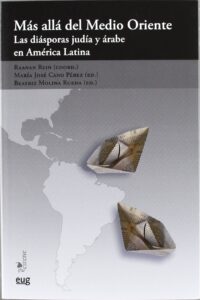
- Comunidades judías en América Latina / José Luis Piczenik.
- Encuentro y alteridad : vida y cultura judía en América Latina / Judit Bokser Liwerant y Alicia Gojman de Backal (coordinadoras) ; compilación de Hellen B. Soriano.
- Inquisición y judaizantes en América española (siglos XVI-XVII) / Ricardo Escobar Quevedo ; [prólogo de Charles Amiel].
- Poylishe Idn in Dorem-Ameriḳe : zaml-bukh tsum 25-yoriḳn yoyvl fun organizirṭn Poylishn Idnṭum in Argenṭine 1916-1941י.
- Los sefaraditas : España, el Imperio Otomano, La Argentina : tradición y cultura / María del Carmen Artigas.
- Los sefardíes en los dominios holandeses de América del Sur y del Caribe,1630-1750 / Günter Böhm.
- “Alumbrado.” (1937) México by Martínez del Río, Pablo.
- La familía Carvajal; estudio histórico sobre los judíos y la Inquisición de la Nueva España en el siglo XVI, basado en documentos originales y en su mayor parte inéditos, que se conservan en el Archivo General de la Nación de la cuidad de México, / por Alfonso Toro.
Lah nasyon : be-ʻiḳvot Yehude Sefarad u-Forṭugal be-ezor ha-Ḳaribi = La Nacion : the Spanish and Portuguese Jews in the Caribbean. לה נאסיון : בעקבות יהודי ספרד ופורטוגל באיזור הקאריב
Below is a brief documentary on Jews in Mexico.
¡Feliz día de la Independencia de México!-16 September 2020!
Today, we celebrate Mexico’s independence day from Spanish colonial yoke. While the Independence and its fruits launched Mexico on a different historical and often turbulent trajectory of political development, it reminds us of the resilience of those who initially resisted Spanish colonial domination. One such figure that inspires me is that of Padre Miguel Hidalgo y Costilla (1753-1811). There has been much debate about how he looked as Mexican authorities have continued to publish a stereotypical image of him. How he looked has been analyzed in a documentary by a social activist, historian, and prolific Mexican writer Paco Ignacio Taibo II (He was born in Spain and his family escaped from Spain from the dictatorship of Franco). I was lucky to hear him speak during the 2018 FIL in Guadalajara.
Title La guerra de Hidalgo by Armando Cisneros Sosa.
Published México : Universidad Autónoma Metropolitana, Azcapotzalco : Miguel Ángel Porrúa, 2011.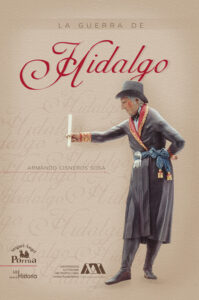
Today, I present you with just a few print items of interest from our Main collections along with the documentary about Miguel Hidalgo y Costilla below. Bancroft Library par excellence continues to hold most of our precious imprints related to Mexico’s Independence. However, our Main circulating collection also has an impressive array of books on Mexico’s war for Independence, 1810-1821.
The other equally interesting item that deals with the age of revolutions in Latin America is a 1864-1867, five volume set, “Annales historiques de la révolution de l’Amérique latine, accompagnées de documents à l’appui. De l’année 1808 jusqu’à la reconnaissance par les états européens de l’indépendance de ce vaste continent. Par M. Charles Calvo.” The full-text of this set is also accessible on Hathi Trust. The last item that I want to highlights a 19th-century coverage of Mexico’s Independence is a four-volume set that was published in Mexico from 1849-1852 is “Historia de Méjico desde los primeros movimientos que prepararon su independencia en el año de 1808, hasta la época presente. Por don Lúcas Alamán …” It is also available in both Google Books and Hathi Trust in its Open Access avatar.
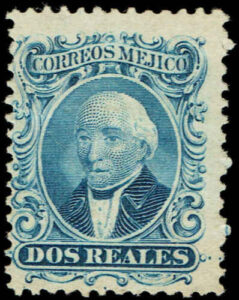 As a final thought, I wanted us to reflect upon the wars we have been fighting around the globe for various reasons. Some of them are righteous, and others are justified using policy-based sermons and formulated on national security interests. European powers fought similar wars in the 19th century when the colonies decided to become independent. Mexico’s wars for Independence against the Spanish Empire remind us of the resilience of Mexicans/ Mexicanas and the drive of those few idealists who strived to build a just world. One such idealist that inspires me is the figure of Padre Miguel Hidalgo and Costilla. ¡Que viva México! and then this thought-provoking opinion piece about Mexico today in Milenio.
As a final thought, I wanted us to reflect upon the wars we have been fighting around the globe for various reasons. Some of them are righteous, and others are justified using policy-based sermons and formulated on national security interests. European powers fought similar wars in the 19th century when the colonies decided to become independent. Mexico’s wars for Independence against the Spanish Empire remind us of the resilience of Mexicans/ Mexicanas and the drive of those few idealists who strived to build a just world. One such idealist that inspires me is the figure of Padre Miguel Hidalgo and Costilla. ¡Que viva México! and then this thought-provoking opinion piece about Mexico today in Milenio.
I leave with you with two YouTube clips: a serious clip of Grito by a child dressed like Padre Miguel Hidalgo y Costilla and the other one is of a corrido about Mexico’s Independence.
![[book cover]](https://update.lib.berkeley.edu/wp-content/uploads/2022/06/tarica.png)
